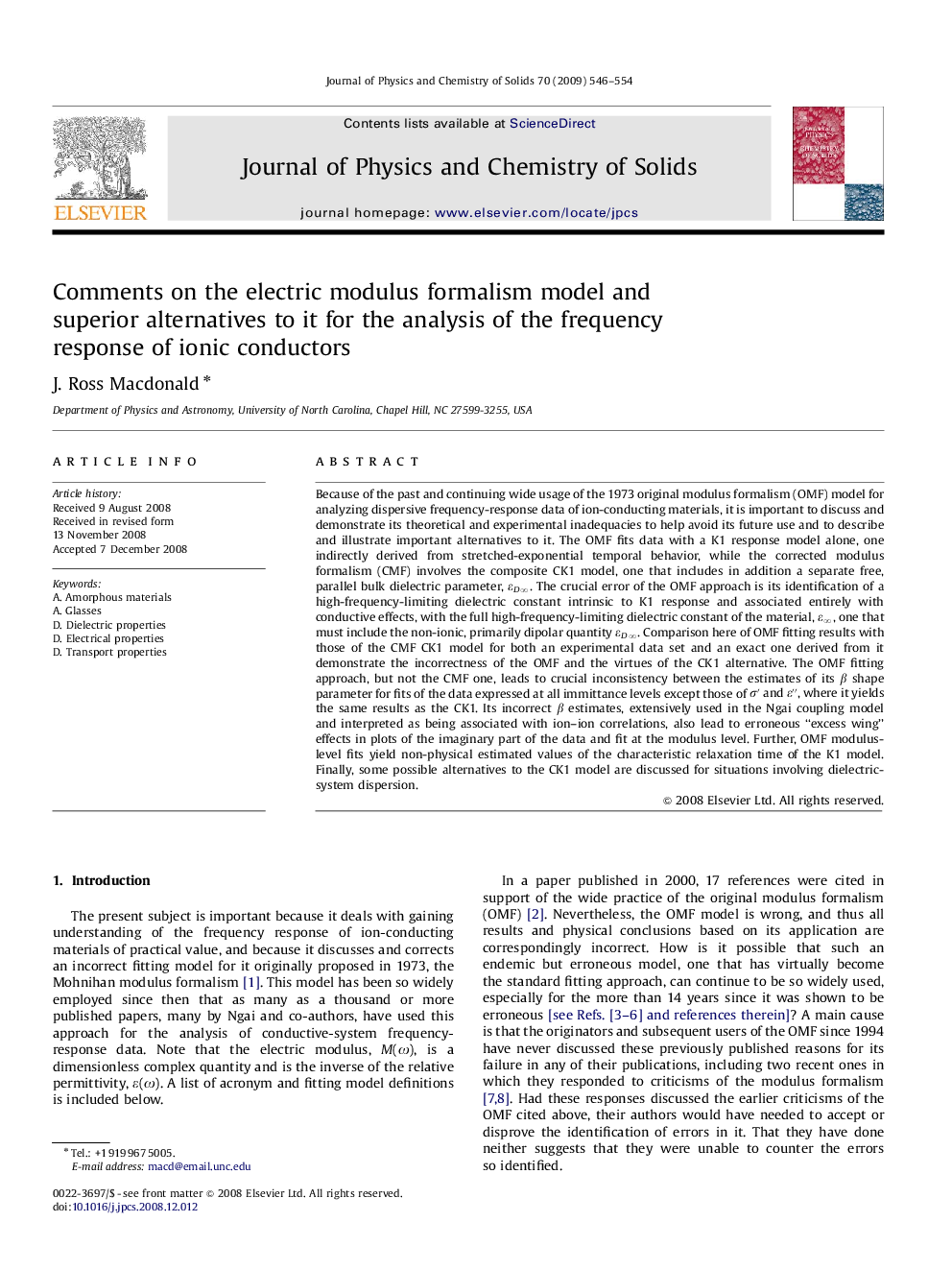| Article ID | Journal | Published Year | Pages | File Type |
|---|---|---|---|---|
| 1517978 | Journal of Physics and Chemistry of Solids | 2009 | 9 Pages |
Because of the past and continuing wide usage of the 1973 original modulus formalism (OMF) model for analyzing dispersive frequency-response data of ion-conducting materials, it is important to discuss and demonstrate its theoretical and experimental inadequacies to help avoid its future use and to describe and illustrate important alternatives to it. The OMF fits data with a K1 response model alone, one indirectly derived from stretched-exponential temporal behavior, while the corrected modulus formalism (CMF) involves the composite CK1 model, one that includes in addition a separate free, parallel bulk dielectric parameter, εD∞. The crucial error of the OMF approach is its identification of a high-frequency-limiting dielectric constant intrinsic to K1 response and associated entirely with conductive effects, with the full high-frequency-limiting dielectric constant of the material, ε∞, one that must include the non-ionic, primarily dipolar quantity εD∞. Comparison here of OMF fitting results with those of the CMF CK1 model for both an experimental data set and an exact one derived from it demonstrate the incorrectness of the OMF and the virtues of the CK1 alternative. The OMF fitting approach, but not the CMF one, leads to crucial inconsistency between the estimates of its β shape parameter for fits of the data expressed at all immittance levels except those of σ′ and ε″, where it yields the same results as the CK1. Its incorrect β estimates, extensively used in the Ngai coupling model and interpreted as being associated with ion–ion correlations, also lead to erroneous “excess wing” effects in plots of the imaginary part of the data and fit at the modulus level. Further, OMF modulus-level fits yield non-physical estimated values of the characteristic relaxation time of the K1 model. Finally, some possible alternatives to the CK1 model are discussed for situations involving dielectric-system dispersion.
